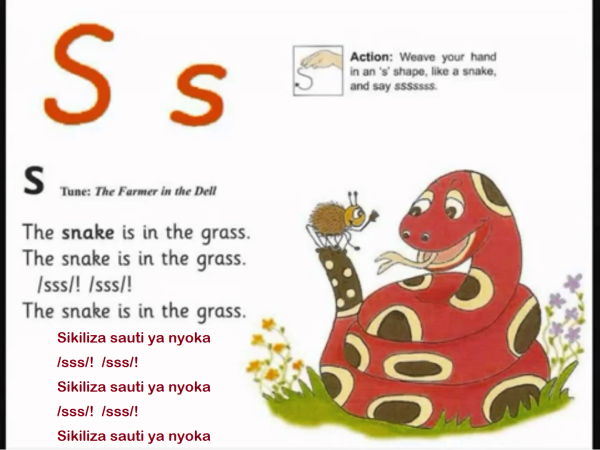What’s so jolly about phonics? A lot. Where was jolly phonics when I was in Nursery. One of our past teachers introduced Jolly phonics to the students approximately two years ago. For those of you who have not heard of Jolly phonics, it is a multi-sensory way of quickly and efficiently learning the alphabet. The 26 letters, in addition to 16 digraphs like ‘ou’ and ‘ai’, are included, making a total of 42 sounds.
Jolly Phonics was started in England by Sue Lloyd, she maintains that all 42 sounds can be taught in nine weeks by doing a new letter or digraph every day. When our teacher introduced it to the classroom, it was immediately clear that it would make a huge difference in learning to read, regardless of whether the child is learning to read English or Kiswahili.
We have had to personalise how we teach these phonics as the children can’t always relate to the pictures, they have know experience of tennis which is used to teach the T sound but have absolutely no problem with the drums for the D sound. With Jolly phonics there are actions and songs that accompany each letter, and to make it easier for our students whose mother tongue is Kiswahili we have created Kiswahili versions of the the Jolly phonics songs, not necessarily direct translations as many don’t lend themselves well to this but words that relate to the sound and action. Once they learn Jolly phonics at Kindergarten, when they get to primary school it is a lot easier.
Our teachers love Jolly phonics, especially learning through song, which plays to their natural inclination, as song is so much a part of African culture. The teachers sit together after school and have a good laugh coming up with Kiswahili songs, it’s an almost guaranteed pick me up for any stressful day.

